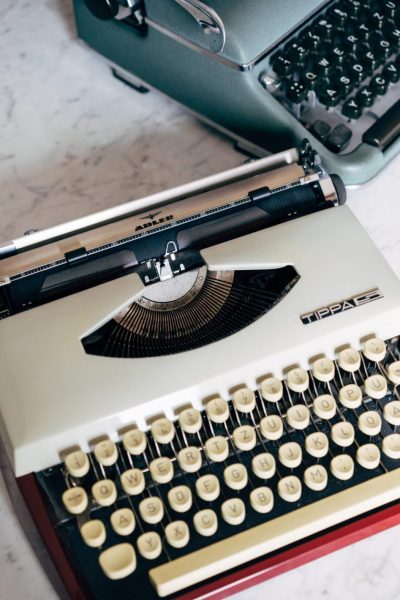
When it comes to the editing and proofreading process, many aspiring or newbie authors get confused about the difference between copy-editing and proofreading.
As a matter of fact, loads of people think that copy editing and proofreading are very similar. They might even think both are the same thing, which is not the case.
So, if you are an aspiring author who doesn’t know the difference either, then you are here at the right place.
Here is everything you need to know about how copy editing differs from proofreading:
Copy Editing vs. Developmental Editing
You might think of copy editing as the heavy lifting of the editing department. The thing about editing is that it typically has nothing to do with the actual story or plot structure. In other words, copy editing has nothing to do with developmental editing or manuscript critique.
Content editing usually comes first and is then succeeded by copy editing. Ideally, by the time one gets to the copy-editing phase, the story needs to be pretty much sitting in its place.
By the time you think about editing, you must pretty much be happy with the story on the page.
Only then can you think about getting professional assistance in polishing your story in the best way possible.
Copy Editing & Spelling Check
Some people think about a copy editor in the most glorified ways possible – they think of copy editors as something similar to a spell checker. Some people might even argue that they don’t need a copy editor in the first place as Microsoft Word is in the best position to correct and identify spelling mistakes.
The truth about copy editing is that it surpasses the typical spell-check and does way more than that.
A copy editor will address loads of things, including misspelled words, grammar, word usage, punctuation, and so on. But, they will also perform basic fact-checking for you, which is why it is always a great idea to hire copy editors in Nashville, especially when you are an aspiring non-fiction author.
Copy Editors Focus on Consistency
Amongst other tasks of the typical copy editor, you will see that they will be looking for consistency in your manuscript.
For instance, let us say that your protagonist is blonde on page nine, and by page ninety-nine, your protagonist has brown hair – and nothing has happened that should have been the cause of color change – then this is a bog consistency error, which your copy editor will be able to identify and rectify.
You get the idea – copy editors will look for consistency in the manuscript.
Copy Editors Conform to One Style Guide
Another grand responsibility of copy editors is the use of a style guide. Most of the time, for fiction, your editor will be working with the Chicago manual of style – and of course, there are different style guides.
Simply put, the copy editor will ensure that everything in the manuscript strictly adheres to a single style guide so that everything in the manuscript fits within the realms of certain rules. The rules include the following:
- What goes on the page?
- How things go on the page.
- Where your commas go.
The correct placement of the semi-colons.
You get the point – a copy editor has to dig really deep, which is why they will have to have those skills – a detail-oriented skill set. The best professional copy editors can dig deep and catch all these little things – even the slightest differences, such as email and e-mail.
While one can use both versions of email, and there is nothing wrong with it, a copy editor focuses on consistency.

Copy Editors Take Care of Phrasing & Transitions
Another thing that copy editors will do is to help authors with their phrasing and transitions. For instance, if there is a really awkward sentence, a copy editor will help rephrase that sentence or reword the sentence.
This way, copy editors can help newbie authors and experienced writers tell their stories in the best way possible. It is important to mention here that not all copy editors might do this – but, in the end, it comes down to who you end up working with.
Nonetheless, some copy editors will actually go as far as actually rewrite, reword, and rephrase things for their clients to ensure that the manuscript or prose is as strong and smooth as possible. They also ensure that their story is really leaping off the page along with being correctly spelled.
Copy Editing vs. Proofreading – What is Different?
Now that you have better understood what copy editing is all about, it is time to explore what proofreading is all about.
You might think of proofreading as the realm of editing that people usually know nothing about; as we mentioned before, developmental editing is more connected with the story content, which is why people typically think that the job of a proofreader is similar to the things that a copy editor does.
Nonetheless, proofreading typically happens at the very end of the process – just before an author is ready to send their manuscript to the publishing house.
Suppose that you as an editor have completed your developmental editing and your copy editing – next, you will move into book cover designs and formatting. In other words, at this point, you are ready to lay out the entire book for the final print.
This is exactly the point where the job of a proofreader comes in.
Many people think of proofreading as the lower version of copy editing, but it is not the same as copy editing. Proofreading usually occurs after the book has been designed. Some proofreaders prefer working with a PDF version of the manuscript, whereas others prefer a proof copy, which is also where the word proofreader comes from.
So, by the time the manuscript gets to the proofreader, it is only a half-inch away from publication. If the proofreader finds loads of mistakes, the manuscript typically gets sent back to the copy editor to review the manuscript again.
